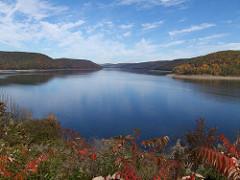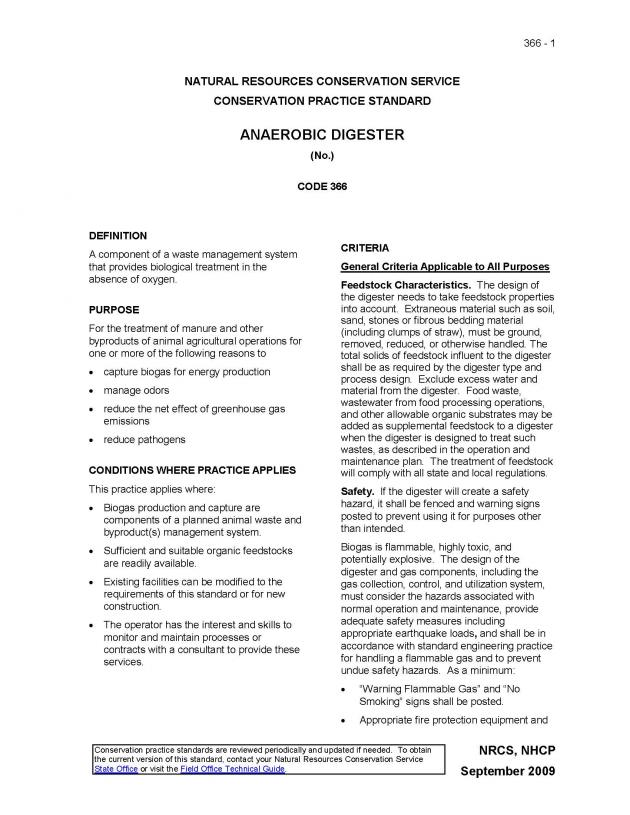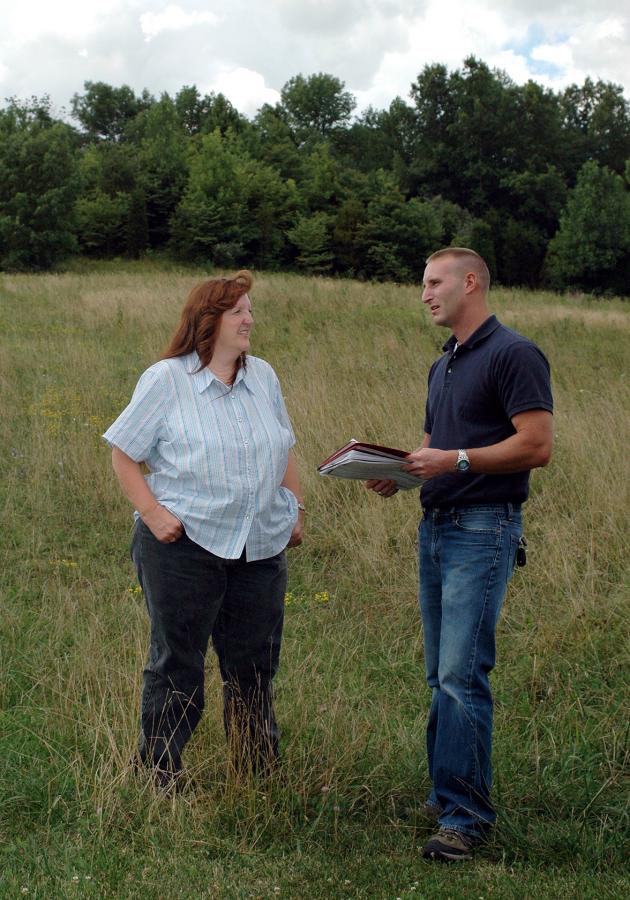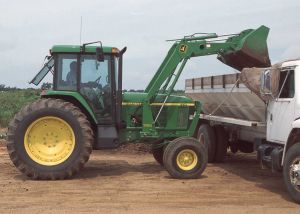This webinar highlights one tool that provides resources to support livestock production and expansion, as well as two others that focus on manure application planning and making the best use of manure available. This presentation was originally broadcast on May 19, 2023. Continue reading “Models & Tools to Improve Manure Management”
Changes in manure management between CEAP I & II
CEAP uses natural resource and farmer survey data along with physical process modeling to estimate the environmental impacts of conservation practices on cultivated cropland. This presentation was originally broadcast on September 23, 2022. Continue reading “Changes in manure management between CEAP I & II”
Going the distance: considerations for the use of manure pipelines
In this webinar, presenters share tips on what to look for, how to monitor your system, and what maintenance is needed for manure pipelines. This presentation was originally broadcast on February 18, 2022. Continue reading “Going the distance: considerations for the use of manure pipelines”
Conservation Practices and Animal Agriculture
Module Home | Importance of Conservation | Conservation Practices in Animal Ag (you are here)
Many conservation practices are available for animal agriculture producers interested in protecting air and water quality, improving soil health or wildlife habitat, and increasing the productivity of animals, pastures, and crops. This module will especially focus on conservation practices impacting water quality with the goal of keeping clean water clean.
Farmers and ranchers can implement conservation practices on their own. They can also seek technical or financial assistance through agencies such as a local Conservation District or USDA Natural Resources Conservation Service (NRCS).
NRCS has developed approximately 160 conservation practice standards at the national level. States have the option of adopting a standard and using the same or more stringent criteria. Farmers should use state-adopted standards whenever available. To find out whether your state has adopted a certain standard, contact your local NRCS office.
Conservation practices relevant to water quality and animal agriculture can be divided into three categories. Clicking the link will take you to a virtual tour website that describes each practice and includes several photos.
|
|
|
|
Conservation Practices Included In Each Virtual Tour
Manure Management
- Anaerobic Digester (366)
- Composting Facility (317)
- Dust Control from Animal Activity on Open Lot Surfaces (Ac.) (375)
- Feed Management (592)
- Nutrient Management (590)
- Roofs and Covers (367)
- Vegetated Treatment Area (635)
- Waste Facility Closure (360)
- Waste Recycling (633)
- Waste Separation Facility (632)
- Waste Storage Facility (313)
- Waste Transfer (634)
- Waste Treatment (629)
- Waste Treatment Lagoon (359)
Land & Pasture Management
- Access Control (472)
- Cover Crop (340)
- Critical Area Planting (342)
- Denitrifying Bioreactor (605)
- Diversion (362)
- Fence (382)
- Filter Strip (393)
- Grassed Waterway (412)
- Heavy Use Protection Area (561)
- Livestock Shelter Structure (576)
- Prescribed Grazing (528)
- Riparian Forest Buffer (391)
- Riparian Herbaceous Cover (390)
- Saturated Buffer (604)
- Streambank & Shoreline Protection (580)
- Stream Crossing (578)
- Watering Facility (614)
Mortality Management
- Animal Mortality Facility (316)
- Emergency Animal Mortality Management (368)
Applying Conservation Practices to Individual Farms
Conservation practices should be implemented on an individual farm basis to ensure they are addressing a natural resource concern and will be effective in the particular farm setting.
Some questions to ask when evaluating whether a conservation practice will be beneficial for an animal agriculture operation:
- Is the farm a confinement facility or are animals on pasture (or both)?
- Are confined animals kept under a roof or open lots (or both)?
- Where are pastured animals housed or fed in the winter?
- Does the operation include crop land?
- Are there waterbodies such as streams or ponds on the facility or crop land?
- How does the farm store or handle manure; as a solid or slurry/liquid?
- How much manure does the farm produce and where is it currently stored?
- Are there neighbors nearby? How many and where?
- Are there environmentally sensitive features on or near the facility? Wells, sinkholes, public parks or public use areas, wildlife, impaired waterbody, or similar features should all be considered.
- What are the goals of the farmer or rancher? What is important to them and what do they have interest and capacity to implement and manage?
For example, consider these fictional farms. Both have 200 dairy cows and are interested in developing a manure management system. They are both in the same state with similar soil types.
Farm 1: There is a child in college interested in returning to help manage the farm, so future expansion is a strong possibility. The farm has sufficient cropland to use the manure they currently produce as crop fertilizer.
Farm 2: This farm is considering organic production. They do not have much cropland and must export most of their manure to neighboring crop farmers. This farm also has connections to organic crop farmers as well as the nursery and landscape industry.
While both farms have similar characteristics, they have very different goals. Their conservation plans could be very different. Farm 1 is likely to consider an earthen or concrete slurry manure storage structure with the biggest question being how large to make the structure considering a possible expansion in the near future. They are likely to develop a comprehensive nutrient management plan (CNMP) to ensure the cropland base continues to support any future expansion.
Farm 2 may look at manure collection and storage very differently. The cattle may have access to open lots (manure is handled as a solid) or grazing paddocks. Given the off-farm connections and lack of crop land, composting or other ways to generate value-added products may be an option. Marketing manure or exporting it off-farm will be important to this farm’s manure management plans.
Both farms intend to protect natural resources but need to implement different practices to reach their goals.
Previous: Importance of Conservation | Next: (Home) Animal Ag, Manure, and Stewardship
Acknowledgements
The Importance of Conservation in Animal Agriculture
Module Home | Importance of Conservation (you are here) | Conservation Practices in Animal Ag
This page focuses largely on USDA Natural Resources Conservation Service (NRCS) practice standards and how NRCS works with farmers by providing technical and financial assistance. The next section in this module discusses many of the practices relevant to animal agriculture in greater detail.
- Why is conservation important to animal agriculture?
- Agencies involved in implementing conservation on farms
- NRCS conservation practice standards
Why is conservation important in animal agriculture?
Conservation is key for farmers interested in protecting natural resources while producing food, fuel, and fiber from working lands. There are a variety of conservation practices that can be voluntarily implemented to protect natural resources for surrounding ecosystems, community, and future generations. Conservation practices can have both on-farm and off-farm benefits and can be customized to the unique location, soils, and needs of each farm. Conservation practices are site-specific, not one-size-fits-all. They must be planned and installed with the characteristics of the individual site in mind.
Many conservation practices are voluntary and incentivized through technical and financial assistance. If a farm is subject to regulatory oversight, NRCS practice standards may not meet the requirements of state or federal regulations or permits. Producers should double-check those requirements rather than assuming that they will suffice.

Photo 1. Animal agriculture operations are very different from farm to farm.
Because manure is one of the largest by-products of animal feeding operations, conservation practices are often designed to increase the farmer’s ability to manage manure as a beneficial resource and reduce risk associated with manure application. Nutrients (whether from manure or from inorganic fertilizer) not taken up by crops can run off from fields or leach to groundwater through rain events or irrigation.
Conservation practices can have beneficial impacts on water quality, wildlife habitat, and air quality. Adopting practices that result in manure applications that are well-timed, at agronomic rates, and away from sensitive locations can help farmers make significant positive contributions to water quality. Conservation practices are important in grazing operations to improve soil and vegetation health and to protect water quality and wildlife habitat. For example, restricting livestock access to a stream or creek reduces the chance the animals will deposit manure or urine in the water, break down stream banks and beds, and/or stir up sediment. Rotational grazing can provide important rest and recovery time for vegetation and allow wildlife cover for nesting or raising their young.
Agencies Involved in Implementing Conservation on Farms
There are several public agencies that cooperate to encourage the use of conservation practices on farms:
- USDA Natural Resources Conservation Service (NRCS)
- Local Conservation Districts
- US Environmental Protection Agency (EPA)
- State environmental agencies
- State agricultural departments
USDA Natural Resources Conservation Service (NRCS)
|
Photo 2. A local USDA Service Center |
USDA NRCS was established in 1935 to work in close partnerships with farmers and ranchers, local and state governments, and other federal agencies to maintain healthy and productive working landscapes on a voluntary, non-regulatory basis. Originally known as the “Soil Conservation Service,” the name was changed to NRCS in 1994 to better reflect the broad scope of the agency’s mission. Learn more about the history of NRCS.
The National Office is located in Washington, DC, and is where national policy, procedures, and conservation practice standards are developed. State offices adopt these standards, either directly, or with changes that make the standards more stringent. The local or district office (Photo 2) works directly with farmers and ranchers to assist them in protecting natural resources by implementing conservation practices on working land. They provide technical and sometimes financial assistance for conservation practices. Learn more about how NRCS is organized.
Video: How to receive conservation assistance from NRCS
Financial assistance for USDA NRCS conservation practices comes from the Farm Bill, a piece of legislation that is developed about every 5 years by Congress. The Farm Bill is traditionally made up of several programs in the areas of food and nutrition assistance, marketing, commodity support, research, conservation, and more. The conservation programs authorized in the 2014 Farm Bill include:
- Environmental Quality Incentives Program (EQIP)
- Conservation Stewardship Program (CSP)
- Agricultural Management Assistance Program (AMA)
Local NRCS offices will help farmers determine if their conservation needs are a fit for financial assistance. Factors that they will consider include:
- Whether the farm is in a watershed or area designated with a high need for conservation practices
- Past efforts of the farmer
- Legislative priorities, such as bioenergy
- The need to encourage beginning, veteran, and minority farmers
More information on financial assistance is available below (How Do Farmers Access Technical or Financial Assistance for Conservation?)
Conservation Districts
|
|
Conservation districts are local governmental units responsible for protecting and conserving natural resources in their assigned geographic area. They are governed by a locally-elected board. In some states, they may have a different name, such as soil and water conservation district or natural resource conservation district. There are over 3,000 conservation districts, nationwide.
Conservation districts often partner with NRCS (Photo 3) to work with local farmers, ranchers, and other landowners to implement conservation practices that help address issues of local importance. By working together, NRCS and the districts can more efficiently address conservation needs.
US Environmental Protection Agency
EPA’s role in conservation is primarily regulatory but also includes non-regulatory, voluntary, and incentive-based programs such as the Clean Water Act Section 319 funding. This program provides grants to states and tribes to reduce nonpoint source runoff.
EPA also develops partnerships with industry. One such example is the EPA AgSTAR program, which works with farmers on a voluntary basis to encourage the use of anaerobic digesters for manure treatment and renewable energy generation.
Recommended resource: EPA National Agriculture Center includes information on regulations, compliance assistance, and partnerships.
State Environmental/Water Quality Agencies
|
Photo 4. State environmental agencies are generally tasked with enforcing the Clean Water Act and Clean Air Act. |
Many Clean Water Act and other programs that originate with federal statutes are implemented by State, Tribal, and Territorial environmental agencies. Those programs generally work directly with local partners and landowners to develop watershed plans and implement nonpoint source control measures. Those partners often include Conservation Districts for agricultural projects and often utilize resources from multiple agencies and organizations, including USDA. Under Section 319 of the CWA, states, territories, and tribes receive grant money that supports a wide variety of activities to control nonpoint source pollution, including technical assistance, financial assistance, education, training, technology transfer, demonstration projects, and monitoring to assess the success of nonpoint source implementation projects.
Recommended Resource: Nonpoint Source Success Stories features stories about nonpoint source impairments with documented water quality improvements attributable to restoration efforts.
State Agricultural Departments
For the most part State agricultural Departments do not play a direct regulatory role in enforcing the Clean Water Act or Clean Air Act. One major area where state agriculture departments are involved in the implementation of conservation practices are in the case of animal mortality, both routine and catastrophic. Most states have regulations that specify appropriate methods for carcass disposal. State agriculture departments may also develop programs that encourage the use of conservation practices through cost-share, educational outreach, or other methods.
NRCS Conservation Practice Standards
There are over 160 conservation practices for which national standards have been developed. Any that are adopted by a state can be implemented in that state to assist farmers and ranchers with their environmental stewardship efforts. Farmers and ranchers should use the conservation practice adopted by the state, rather than the national standard.
To find your state’s approved practice standards, contact your local NRCS office for assistance.

Photo 5. Many different conservation practices are used on animal agriculture operations.
What are conservation practice standards?
|
|
A conservation practice is defined as: “A specific treatment, such as a structural or vegetative measure, or management techniques, commonly used to meet specific needs in planning and implementing conservation, for which standards and specifications have been developed.”
NRCS conservation practice standards provide guidance for applying conservation practices and set the minimum level for acceptable application of the technology. Each standard is given a number. For example, the standard for “Anaerobic Digester” is #366. Practice standards include information (Photo 6), such as:
- Purpose: The conservation goal achieved with this practice
- Where it applies: The type of farm, land use, or situation where the practice is appropriate
- Criteria: Location, safety considerations, permits needed, management, related conservation practices, and other important considerations
Three categories of conservation practices that apply to animal agriculture include:
- Manure Management
- Land and Pasture Management
- Mortality (Dead Animal) Management
Specific practices and details about each practice are included in the next section, Conservation Practices in Animal Agriculture.
How are standards for practices developed/updated?
Practice standards may be newly identified or change over time based on new science and technology. They are periodically reviewed and updated, usually every 5 years. Any new or updated practice standard is reviewed by technical experts in pertinent fields and is available for review and comment by the public before it is adopted.
NRCS publishes national conservation practice standards in its National Handbook of Conservation Practices (NHCP). If a practice is adopted by a state, the state has some latitude to develop a more stringent or specific version that fits typical conditions or situations in that state.
Recommended Resource: The first 12-13 minutes of the video “Use of NRCS Conservation Practice Standards and Specifications” describes the process of how a new standard may be identified as well as the process used to validate it and the sections included in a standard. It is presented for NRCS staff, but is useful for others that work with farmers who want more background on how a practice standard is developed and what is required to be in a standard.
What is conservation planning?
|
Photo 7. Conservation planning needs to consider individual farm goals and current conditions. |
A conservation plan is a record of the conservation practices implemented on a farm or ranch. It may include sub-plans such as one for grazing management, comprehensive nutrient management, wildlife management, or others.
Conservation planning starts with a farmer or rancher recognizing a problem area or wanting to improve some aspect of the farm or ranch. The next step is to contact NRCS. NRCS helps the farmer or rancher review and analyze the current conditions for possible solutions. Depending on the preferences of the client, certain practices may be selected to include in the conservation plan.
Conservation plans are voluntary and are developed by NRCS at no cost.
How do farmers access technical or financial assistance for conservation?
Contact your local NRCS office to access technical assistance in implementing conservation practices. If conservation practices are eligible for financial assistance (cost-share), farmers complete and submit an application. If approved for cost-share, a contract is developed that specifies what will be done, when it will be done, and how much assistance will be provided.
A look at specific practices that can apply to animal agriculture operations is discussed in the next section, Conservation Practices in Animal Agriculture
Previous: (Home) Animal Ag, Manure, and Water Quality | Next: Conservation Practices in Animal Ag
Acknowledgements
USDA-NRCS Conservation Practice Standard: Amending Soil Properties with Gypsum Products
Proceedings Home | W2W Home 
The US Department of Agriculture National Resource Conservation Service is tasked with providing support to preserve the nation’s natural resources. They provide farmers with financial and technical assistance to voluntarily put conservation practices on the ground by promoting methods to preserve and improve natural resources and promoting Best Management Practices for environmentally sound farm production. The NRCS uses technical guides or “Conservation Practice Standards”, which contain technical information about the conservation of soil, water, air, and related plant and animal resources, as the primary scientific references for this process. Recently, the NRCS has developed a new national conservation practice standard for the use of gypsum to improve soil resources. This presentation will discuss the specifics of this standard and the particular relevance to animal waste management.
The NRCS national conservation practice standards entitled “Amending Soil Properties with Gypsum Products” has the following definition: using gypsum- (calcium sulfate dihydrate) derived products to change the physical and/or chemical properties of soil. The standard outlines the use of gypsum for four different purposes, two of which are directly related to animal waste management. These two purposes are: 1) Improve surface water quality by reducing dissolved phosphorus concentrations in surface runoff and subsurface drainage, and 2) Improve water quality by reducing the potential for pathogens and other contaminants from moving from areas of manure and biosolids application. The specific guidance provided in the standard for these two purposes will be discussed. There are also concerns regarding gypsum use in agriculture which are addressed in the standard. The guidance regarding these concerns will also be discussed. Within NRCS, the promotion of Best Management Practices for the natural resource conservation is handled on a state by state bases. This allows each state to focus on the issues that are most important for their specific region. An update of the current activities of the NRCS for financial and technical assistance in regards to gypsum use will be discussed.
Author
H. Allen Torbert
The authors are solely responsible for the content of these proceedings. The technical information does not necessarily reflect the official position of the sponsoring agencies or institutions represented by planning committee members, and inclusion and distribution herein does not constitute an endorsement of views expressed by the same. Printed materials included herein are not refereed publications. Citations should appear as follows. EXAMPLE: Authors. 2017. Title of presentation. Waste to Worth: Spreading Science and Solutions. Cary, NC. April 18-21, 2017. URL of this page. Accessed on: today’s date.
NRCS Online Air Quality, Energy and Climate Change Courses
The Natural Resources Conservation Service (NRCS) has begun developing online courses in three curriculum tracks: air quality, energy, and climate change. Air Quality, Climate Change, and Energy is the lead-in to the three tracks.
The courses are designed for all Natural Resource Conservation Service (NRCS) employees, but particularly for State Air Quality and Energy Contacts, conservation planners, partnership employees, and conservation technical assistance providers to assist them in integrating air quality, energy and climate change into conservation planning and programs. Although these courses were developed specifically for NRCS employees, the information contained in them may also be useful to NRCS partners and others associated with conservation in agriculture.
*A USDA eAuthentication account is needed to access the courses.*
Introductory Course
- Air Quality, Climate Change, and Energy | Course description | Go to the course
Air Quality Curriculum Track
- Why Should We Care About Air Quality? | Course description | Go to the course
- Air Quality Resource Concerns | Course description | Go to the course
- Air Quality and Animal Agriculture | Course description | Go to the course
- Greenhouse Gases and Carbon Sequestration | Course description | Go to the course
Energy Curriculum Track
- Why Do We Care About Energy | Course description | Go to the course
- Energy Basics | Course description | Go to the course
Climate Change Curriculum Track
- Greenhouse Gases and Carbon Sequestration | Course description | Go to the course
- Why Do We Care About Climate Change | Course description | Go to the course
Environmental Credit Trading
- Introduction to Environmental Credit Trading | Course description | Go to the course
Other courses are either in development or are being planned to supplement the learning modules for each of these curriculum tracks
Air Quality, Climate Change, and Energy
Upon completion of the course, participants will be able to:
- Define air quality, climate change, and energy as they relate to the NRCS mission and explain how they are interrelated
- Explain the importance of these issues for land managers and NRCS itself
- Recognize how soil, water, air, plants, animals and human activity all affect, and are affected by, energy and climate change
- Identify examples of how air quality, climate change, and energy concepts apply to agricultural conservation
- List and locate additional resources that can be used to expand knowledge of these topics
Course Link. Air quality is already a functional part of the NRCS conservation portfolio (the first ‘A’ in SWAPA+H). Climate change and energy are now becoming significant considerations in conservation planning. This course will provide a broad overview of these three topics, and how they are related to each other and SWAPA+H components. Students will learn how agricultural activities can contribute to air emissions, sequester carbon, manage greenhouse gas emissions, and better conserve energy. The course also will provide examples of addressing these issues via NRCS planning and programs. 90 minutes Go to Air Quality, Climate Change, and Energy….
Why Should We Care About Air Quality?
Upon completion of the course, participants will be able to:
- State why air is an important natural resource
- Explain why it is important to take a holistic approach to conservation planning
- List the major reasons why NRCS addresses air quality and atmospheric change
- Identify several agricultural activities that can release air emissions
- Describe various reasons for land managers to address air quality and atmospheric change
- Identify the role of NRCS employees in addressing air quality and atmospheric change
Course link. As the first “A” in SWAPA+H, air is an important natural resource that is vital to life. Although our agency has addressed issues related to air quality and atmospheric change since its formation, these issues have not been a traditional focus area for the NRCS in most locations. As our partners and the public have begun placing a larger emphasis on air quality and atmospheric change issues, NRCS has needed to develop the technical expertise for integrating conservation of the air resource into our assistance portfolio.
This course will provide a broad overview of air quality and atmospheric change and begin to equip NRCS conservationists and our partners with the knowledge and confidence to address air-related resource concerns. 30 minutes. Go to Why Should We Care About Air Quality?…
Air Quality Resource Concerns
Upon completion of the course, participants will be able to:
- Identify the four primary air quality resource concerns and the emissions that contribute to these concerns
- Identify the effects of particulate matter, ozone precursors, and odors on air quality
- Discuss greenhouse gases as an atmospheric change issue
- Derive potential solutions to reduce agricultural emissions of particulate matter, ozone precursors, odors, and greenhouse gases
- List and locate additional resources that can be used to expand knowledge of these topics
Course link. The NRCS utilizes the concept of “resource concerns” in conservation planning. There are four broad categories of air-related resource concerns: particulate matter, ozone precursors, odors, and greenhouse gases and carbon sequestration. This course provides an overview of each of these four air quality resource concerns and how they can most effectively be addressed in the NRCS planning framework. Principal air emissions from agricultural operations are discussed, and how each of these is related to one or more of the air resource concerns. Finally, a variety of mitigation strategies are presented for managing emissions and improving these four air quality concerns. 50 minutes Go to Air Quality Resource Concerns…
Air Quality and Animal Agriculture
Upon completion of the course, participants will be able to:
- Identify the primary reasons that animal production operations are currently the main focus when discussing air quality issues in agriculture
- Identify the primary air emissions from animal production operations and describe how these emissions are generated, emitted, and transported
- Identify NRCS options for mitigating air emissions from animal production operations
When discussing air quality issues in agriculture, animal production operations are typically the primary focus for mitigation and regulation. This course will introduce the air emissions associated with animal operations and provide information on how NRCS can help producers mitigate these emissions. 60 minutes Go to Air Quality and Animal Agriculture…
Greenhouse Gases and Carbon Sequestration
Upon completion of the course, participants will be able to:
- Explain the greenhouse effect
- Discuss the characteristics of sunlight and earth’s radiation balance
- Determine how changes in greenhouse gas emissions can influence global climate change
- Identify methodologies in which agricultural and natural resource systems can mitigate greenhouse gas emissions and effects
- Given a scenario, explain the importance of a holistic approach to the reduction of greenhouse gas emissions
Course Link Climate change and carbon offset trading have gained great interest in many parts of the agricultural community over the past few years. But why should we as NRCS conservationists be interested in these issues? Conservation systems that we design and help implement can often have a positive influence on the emission or storage of gases which, when in the atmosphere, can affect climate change. This course shows the importance of greenhouse gases to life on earth, the potential negative consequences of increasing greenhouse gas concentrations in the atmosphere, agricultural sources of greenhouse gases, and potential methods in which agriculture can reduce its net emissions of greenhouse gases to the atmosphere. 60 minutes Go to Greenhouse Gases and Carbon Sequestration…
Why Do We Care About Energy?
Upon completion of the course, participants will be able to:
- Describe why energy costs and energy security are so important to land managers.
- Describe environmental impacts of fossil fuel exploration, production and use.
- Describe energy opportunities available to land managers and NRCS
Course Link While energy has not traditionally been addressed in the NRCS planning process, it is receiving unprecedented attention in the national and international news. This short course provides insight into why energy issues are important to agriculture and the nation. It gives participants the opportunity to explore how our energy choices can impact NRCS and the natural resources we work to conserve. 30 minutes Go to Why Do We Care About Energy?…
Energy Basics
Upon completion of the course, participants will be able to:
- Describe basic terminology and energy concepts.
- Identify non-renewable and renewable sources of energy and describe their origins, benefits and uses
- Explain life cycle analysis and it relevance to comprehensive energy planning
- Describe agriculture’s role in utilizing renewable energy alternatives
Course Link Understanding energy basics is fundamental to effective energy conservation planning. This course establishes a technical foundation to prepare NRCS planners to incorporate energy considerations into conservation plans. It provides general background on the fundamental principles behind energy issues in agricultural settings. 90 minutes Go to Energy Basics…
Why Do We Care about Climate Change?
At the completion of this course, students will be able to:
- Understand climate change and its key drivers
- Explain the impacts of climate change on agriculture and natural resources
- Differentiate mitigation from adaptation
- Discuss NRCS’ role in helping land managers and owners in mitigating and adapting to the impacts of climate change
Course link. Climate plays a key role in conservation planning, natural resource management and agricultural production. Changes in climate can have significant impacts on managing and protecting agricultural and natural resources. NRCS is educating its employees and partners about climate change, and communicating climate change impacts to NRCS customers. Understanding climate change and its impacts will help NRCS assist private landowners, producers, and land managers cope and adapt to changing climate.
This course discusses climate change and related concepts, the impacts of climate change on agriculture and natural resources, and NRCS’ role in helping private land owners and land managers address climate change mitigation and adaptation through conservation planning. 30 minutes. Go to “Why Care About Climate Change?”
Technical Contact: Carolyn Olson at Carolyn.olson@wdc.usda.gov
Introduction to Environmental Credit Trading
Course link: This course provides an introductory discussion of environmental credits, environmental credit trading, and market-based approaches providing environmental and economic benefits.
At the completion of this course, students will be able to:
- Understand environmental credit trading
- Identify markets for environmental credits
- Explore the benefits and costs of participating in markets
- Understand how different environmental practices can produce various environmental credits
- Outline various ways agricultural producers can benefit from environmental credit trading
- Explain how producers can participate in environmental credit trading
Course length: 90 minutes. Go to “Introduction to Environmental Credit Trading”
Technical Contact: Carolyn Olson at carolyn.olson@wdc.usda.gov
Page Manager
Greg Zwicke, P.E.
Air Quality Engineer
Air Quality and Atmospheric Change Team
USDA-NRCS, WNTSC
2150 Centre Ave.
Building A, Suite 231
Ft. Collins CO 80526
greg.zwicke@ftc.usda.gov
Ph. 970.295.5621


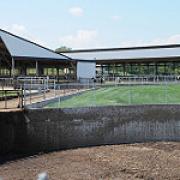
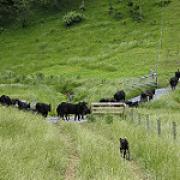

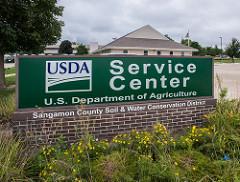
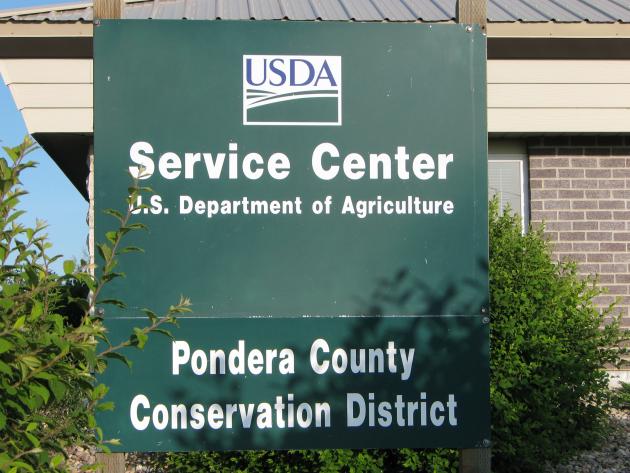 Photo 3. This local conservation district office is located in the same building as the local USDA service center.
Photo 3. This local conservation district office is located in the same building as the local USDA service center.